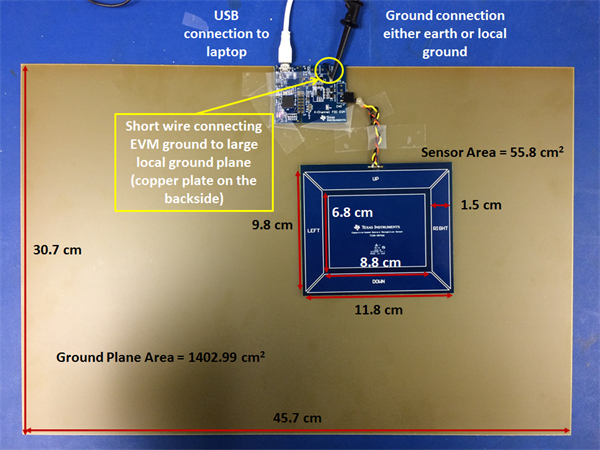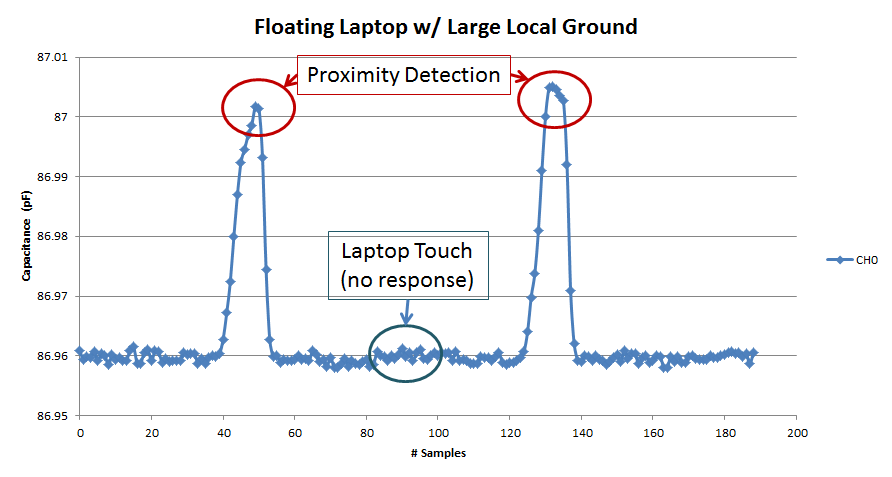SNOA952 May 2016 FDC2112 , FDC2112-Q1 , FDC2114 , FDC2114-Q1 , FDC2212 , FDC2212-Q1 , FDC2214 , FDC2214-Q1
3.3 Floating Laptop With Large Local Ground Plane
In order to address this, a larger ground plane is introduced near the system as seen in Figure 9. This ground plane is connected to the ground of the EVM via the short black wire circled in yellow. This ground is also connected to the laptop ground. This setup allows for the larger, local ground plane to be at the same potential as the floating ground of both the laptop and the EVM. The reference ground for the FDC device is now set at the local ground and it effectively shields the sensor from any external ground coupling.
 Figure 9. The Setup of the Custom Bezel Sensor, FDC2214 EVM, and Large Local Ground Plane Which IS Connected to the EVM
Figure 9. The Setup of the Custom Bezel Sensor, FDC2214 EVM, and Large Local Ground Plane Which IS Connected to the EVM  Figure 10. Capacitance Measurements of the System With the Laptop Floating but Also With a Large Local Ground Connected to the EVM
Figure 10. Capacitance Measurements of the System With the Laptop Floating but Also With a Large Local Ground Connected to the EVM As expected from the circuit model of Figure 3, Figure 10 shows no significant response when the laptop is touched. One thing to note is that the total capacitance change due to proximity detection (10 cm away) decreases and is now at 0.04 pF instead of 0.15 pF. This is due to re-distribution of the electric fields and hence the potential in space – having a large nearby ground will dilute the signal and decrease sensitivity because a large ground parasitic capacitance is introduced (Equation 11). However, even though the sensitivity is reduced, the SNR is still 11 dB. This case illustrates that excess SNR can be traded off for improved immunity to unintended ground shift and false detections, as a result.
 Figure 11. Ground Parasitic Capacitance Between the Ground Plane and the Sensor
Figure 11. Ground Parasitic Capacitance Between the Ground Plane and the Sensor This sort of system more closely mimics automotive applications such as kick or door sensors and collision avoidance where the sensors are placed in close proximity to the chassis ground of the car. Because there is a large local ground plane in these applications, the ground shift phenomenon is not an issue although other parameters may need to be changed in order to achieve the required sensitivity; for example, the sensor may need to be larger to achieve the desired sensing range.